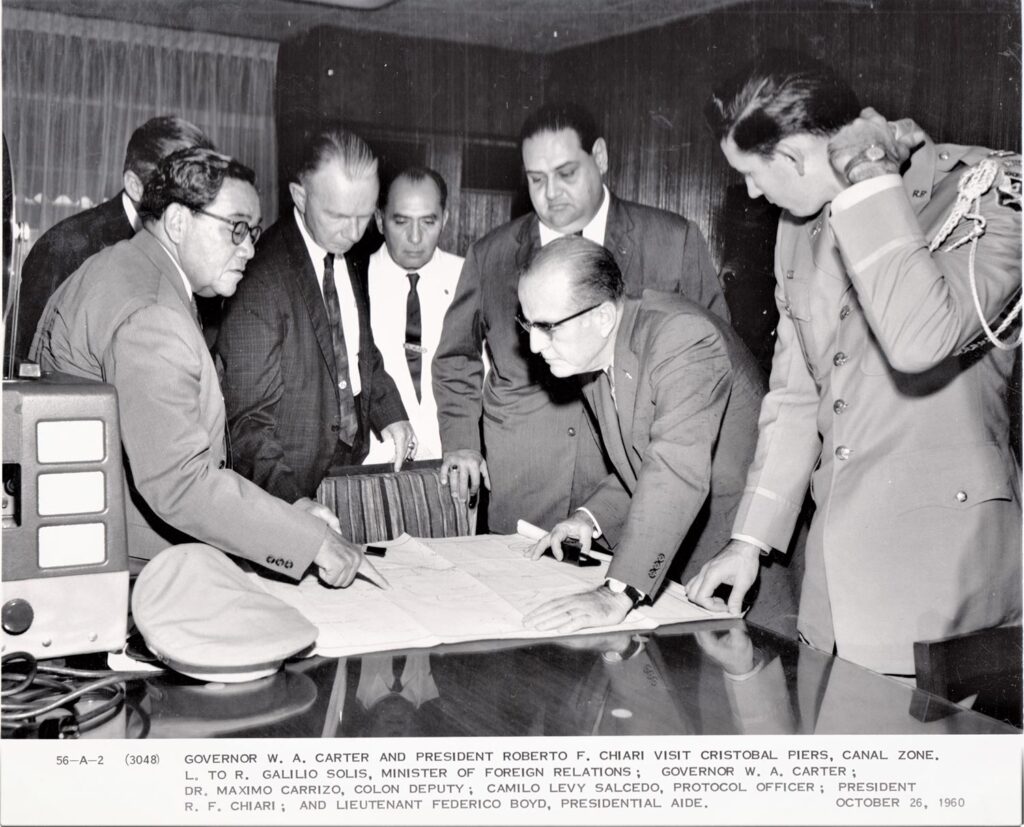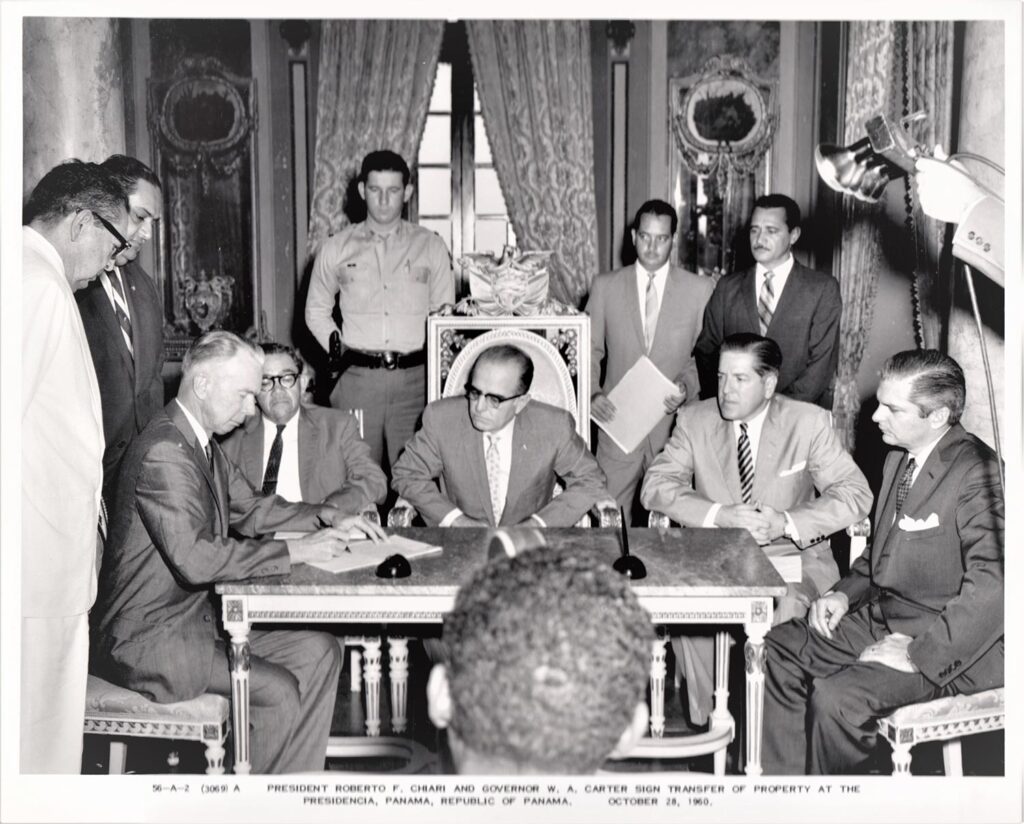Roberto F. Chiari: The Legacy of a Worthy President
Roberto F. Chiari was born on March 2, 1905, son of President Rodolfo Chiari Robles and Ofelina Remón Arias. The […]
Roberto F. Chiari was born on March 2, 1905, son of President Rodolfo Chiari Robles and Ofelina Remón Arias. The young Roberto attended primary and secondary school at Colegio de La Salle where he obtained certificates of Mercantile Expert and high school diploma.
He began working as a clerk in the Third Municipal Court, and was later aide to the President of the Republic (1924-1931), deputy to the National Assembly (1940-1945), and was Minister of Health and Public Works (1945) in the cabinet of President Ricardo Adolfo de la Guardia.
Around 1948, he was elected Second Vice President during the administration of Domingo Díaz Arosemena, and held the executive power from November 20 to 24, 1949.
In 1952, he ran for the Civilist Alliance against his cousin, Colonel José Antonio Remón, but lost. At that time, he was appointed president of the Chamber of Commerce and President of the Liberal Party for eight years. He worked at the Ofelina sugar mill in Natá, together with his father and brothers. He was manager of the sugar company “La Estrella”, S.A. and one of the main businessmen and industries of the country.

The Presidency
He became President of the Republic in 1960. His administration coincided with the rise of the alliance for progress promoted by U.S. President John F. Kennedy. His government promoted agrarian reform and the planting of schools. He inaugurated the General Hospital of the Social Security Fund in 1962, undertook a vast vaccination program. He created the Institute of Hydraulic Resources and Electrification (IRHE) and the Institute of Aqueducts and Sewage (IDAAN), and initiated the construction of the hydroelectric work of La Yeguada.

The Conflict
In 1963 an agreement was signed between Panama and the United States where they agreed to place the Panamanian flag on public buildings in the Canal Zone. This agreement was received with animosity by the Zonians, and in several buildings, the order was not obeyed. This exacerbated the nationalist feelings of the Panamanian people and groups in defense of sovereignty began to raise their voices against these events.
On January 9, 1964, serious and bloody incidents took place when a group of students from the National Institute marched peacefully to Balboa High School, the largest high school in the Canal Zone, to assert their request that the national flag be flown there as well.
The students were insulted by the Zonians and the flag they were carrying was defaced. This was the beginning of a clash between the Panamanian people (armed with stones, sticks and Molotov cocktails) and the police and soldiers of the Canal Zone. The conflict quickly escalated and students, workers and ordinary Panamanians began to be injured and even killed by the Zone’s security forces.
Chiari at the crossroads
Faced with such a difference of forces, part of the demonstrators decided to go to the Palacio de las Garzas hoping to find government support for the action. And they found it. President Chiari informed them that he had made the decision to break diplomatic relations with the United States. The demonstrators then asked President Chiari to go out to the balcony of the palace and inform the crowd of his decision, thus calming the spirits of a people with enormous yearning for justice. The President agreed and spoke with the demonstrators, forging a bond between people and State that would facilitate the difficult journey to achieve sovereignty and the recovery of the Panama Canal.
On January 10, the United States sent a special delegation to Panama, led by Secretary of Defense Cyrus Vance, to try to find a solution to the altercations. The delegation was received by President Chiari in a Palacio de las Garzas surrounded by 600 people shouting “gringos out”, and using this effervescence as a measure of pressure with the U.S. visitors.
By January 12, with a calmer Panama City, President Chiari was part of the procession of thousands of mourners who accompanied the fallen in the heroic deed.
The value of a decision
Above all, Roberto F. Chiari has gone down in history as the president who faced the events of January 9, 1964 with dignity. Breaking relations with the United States of America was not an easy task. It was a historic decision. Never before had a Latin American country broken relations with the titan of the North. Suddenly, Chiari found himself in a political situation of which there were no previous references in the region. And he was not only affected politically by that decision, but also economically, since his sugar companies had business with the United States. Many power groups, and even people within his Cabinet, opposed the idea of breaking off relations. Chiari was of a serious and crafty nature, and he must have felt quite alone in making that decision, perhaps the most important of his life. But it was the right decision. Once he made it, there was no turning back, he would have achieved a goal, a state policy that other Panamanian leaders would replicate: the quest for sovereignty through the abrogation of the 1903 Treaty and its replacement by an entirely new one.
The Canal Library and Chiari’s Legacy
It is because of his actions on January 9, 1964 that the Canal Library was renamed after him in 2005. The President Roberto F. Chiari Library is located in the same building where, in 1964, the Balboa High School was located, the place where the most decisive page in our struggle for sovereignty was written.
Where once stood an institution that was a bastion against Panamanian nationalist desires, now stands a library with documents such as: Roberto ́Nino ́ Chiari, president of dignity, by Alfredo Figueroa Navarro; Panama January 9, 1964 “What happened and why”, by Roberto N. Méndez; and January 9: Testimony and Meaning, by Adolfo Ahumada; books by Ascanio Arosemena; photos of the events of January 9 and even plaques of the police officers of the area from the 1960s are on display.